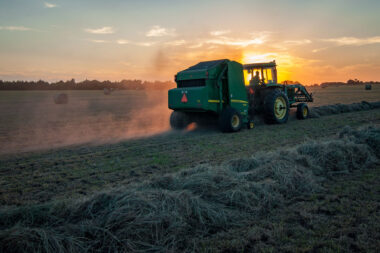The agriculture industry plays a crucial role in feeding the global population, but its practices often result in environmental challenges, including the runoff of excess nutrients into water bodies. This agricultural runoff, rich in nitrogen and phosphorus, contributes to water pollution, harmful algal blooms, and ecosystem degradation. However, innovative approaches are emerging to not only address these environmental concerns but also harness the potential of algae in transforming agricultural runoff into a renewable and eco-friendly energy source—algal biofuels.
The Challenge of Agricultural Runoff:
Agricultural runoff, laden with fertilizers and pesticides, poses a significant threat to water quality. This runoff, when discharged into rivers and lakes, fuels the growth of harmful algal blooms, depleting oxygen levels and causing harm to aquatic life. It also adversely affects human health, as some algal blooms produce toxins that contaminate drinking water supplies. Traditional approaches to managing agricultural runoff often fall short, necessitating innovative and sustainable solutions.
The Algae Solution:
Algae, with its rapid growth rate and ability to thrive in nutrient-rich environments, presents a promising solution to the challenges posed by agricultural runoff. Various species of algae have the capacity to absorb and assimilate nutrients such as nitrogen and phosphorus, mitigating the impact of runoff on water bodies. Additionally, certain types of algae are rich in lipids, which can be extracted and converted into biofuels through a process known as transesterification.
Algal Biofuels Production Process:
The algal biofuels production process involves several key steps:
Strain Selection:
In the first phase, algal strains with high lipid content and rapid growth rates, suitable for biofuel production, are identified through research and selection.
Optionally, genetic engineering techniques are employed to enhance lipid productivity and tailor algae for specific environmental conditions.
Cultivation:
Algae can be cultivated in either closed photobioreactors or open ponds, with the choice depending on scale and environmental conditions.
A nutrient rich environment, often utilizing agricultural runoff or synthetic nutrient solutions, is provided for optimal cultivation.
Controlled conditions, including monitoring and adjusting temperature, light exposure, and pH levels, are maintained to optimize algal growth.
Harvesting:
Methods such as flocculation or centrifugation are employed to concentrate and separate algae from the growth medium.
Filtration techniques are utilized to efficiently capture and harvest algae.
Lipid Extraction:
Organic solvents like hexane or supercritical fluids are used for the extraction of lipids from the harvested algae.
Mechanical pressing involves applying pressure to squeeze out oils from the algal biomass.
Biodiesel Production (Transesterification):
Algal lipids undergo a reaction with alcohol, typically methanol or ethanol, in the presence of a catalyst such as sodium hydroxide or potassium hydroxide.
Processes like washing or distillation are applied to separate biodiesel from the glycerol byproduct.
Byproduct Utilization:
Opportunities are explored for utilizing residual biomass after lipid extraction for purposes such as animal feed, fertilizers, or other bio based products.
Glycerol, if produced as a byproduct, finds applications in various industrial processes.
Software and Hardware Required:
Monitoring and Control Systems:
SCADA Systems: Supervisory Control and Data Acquisition systems for real-time monitoring and control of cultivation conditions.
Sensors: Utilize sensors for measuring parameters like pH, temperature, nutrient levels, and biomass density.
Cultivation Hardware:
Photobioreactors: Closed systems with controlled conditions for optimal algae growth.
Open Ponds: Large outdoor ponds with paddlewheels for mixing and aeration.
Harvesting Equipment:
Centrifuges: High speed centrifuges for efficient algae harvesting.
Filtration Systems: Various types of filters (e.g., membrane filters) for separating algae from the growth medium.
Lipid Extraction Equipment:
Extraction Units: Equipment for solvent extraction or mechanical pressing of algal biomass.
Supercritical Fluid Extractors: For supercritical fluid extraction methods.
Biodiesel Production Equipment:
Reactor Vessels: Stainless steel or glass reactors for transesterification reactions.
Separation Equipment: Centrifuges, distillation columns, or washing units for separating biodiesel from glycerol.
Analytical Tools:
Gas Chromatography (GC): Analyze the composition of extracted lipids and biodiesel.
High-Performance Liquid Chromatography (HPLC): Measure lipid content and other chemical components.
Data Management Software:
Laboratory Information Management Systems (LIMS): Manage and track data related to strain performance, cultivation conditions, and product quality.
Process Control Software: Implement software for controlling and optimizing various stages of the production process.
Safety Systems:
Emergency Shutdown Systems: Ensure safety through automated shutdown systems in case of critical conditions.
Ventilation and Gas Detection Systems: Monitor and control the release of gases in enclosed spaces.
Key Production Trends And Techniques
An overview of some key trends and techniques that is being explored and developed in the production of algal biofuels
Advanced Strain Selection:
Researchers are focusing on identifying or genetically engineering algal strains with desirable traits, such as high lipid content, rapid growth rates, and adaptability to varying environmental conditions.
Cultivation Systems:
Photobioreactors (PBRs): Closed systems like PBRs are being increasingly used for controlled cultivation. They offer precise regulation of environmental factors like light, temperature, and nutrients, optimizing algal growth.
Mixotrophic Cultivation: This technique involves providing both organic carbon and light as energy sources, allowing for increased biomass and lipid productivity.
Nutrient Recycling and Wastewater Integration:
Implementation of closed loop systems that recycle nutrients and use wastewater (such as agricultural runoff) as a nutrient source. This approach enhances sustainability by reducing the need for external nutrient inputs.
Harvesting and Dewatering:
Low Energy Harvesting Methods: Exploration of energy efficient harvesting techniques, including bio flocculation, gravity sedimentation, and filtration, to reduce the energy costs associated with separating algae from the cultivation medium.
Continuous Harvesting: Developing continuous harvesting methods to maintain high productivity without disrupting the cultivation process.
Lipid Extraction:
Non Solvent Extraction Techniques: Investigation of non solventbased methods for lipid extraction, such as mechanical methods (e.g., ultrasound assisted extraction) and enzymatic hydrolysis, to reduce environmental impact and production costs.
Biodiesel Production:
Catalytic Processes: Advancements in catalytic processes for transesterification, including the use of heterogeneous catalysts, enzymes, and novel catalyst formulations to improve reaction efficiency and reduce waste.
Downstream Processing:
Integrated Biorefineries: Development of integrated biorefinery concepts where various products (lipids for biofuels, proteins, carbohydrates) from algae are extracted and utilized, creating a more economically viable and sustainable process.
Monitoring and Control:
Sensor Technologies: Integration of advanced sensor technologies for real time monitoring of cultivation conditions, allowing for immediate adjustments and optimization.
System Modeling and Artificial Intelligence (AI):
Use of mathematical modeling and AI algorithms to predict and optimize cultivation conditions, harvest times, and processing parameters, improving overall efficiency.
Life Cycle Analysis (LCA):
Increasing emphasis on conducting comprehensive life cycle assessments to evaluate the environmental impact of algal biofuel production, helping to refine and optimize processes for sustainability.
Scale Up Strategies:
Exploration of scalable production strategies to move from laboratory scale experiments to commercial scale production, considering economic feasibility and process efficiency.
Environmental Benefits:
1. Water Quality Improvement: Algae actively remove pollutants from the water, contributing to the restoration of water quality.
2. Carbon Sequestration: Algal biofuel production can potentially offset carbon emissions, acting as a carbon neutral or even carbon negative energy source.
3. Reduced Dependency on Fossil Fuels: Algal biofuels offer a renewable and sustainable alternative to traditional fossil fuels, reducing the carbon footprint associated with energy production.
Challenges and Future Outlook:
While the potential benefits of algal biofuels from agricultural runoff are promising, challenges such as scalability, economic viability, and refining cultivation techniques remain. Ongoing research and development efforts aim to optimize algal biofuel production processes and address these challenges for widespread implementation.
The integration of algae into the management of agricultural runoff not only addresses environmental concerns associated with nutrient rich runoff but also offers a renewable energy solution. Algal biofuels have the potential to transform a once problematic byproduct of agriculture into a valuable resource for sustainable energy production, contributing to a more harmonious relationship between agriculture, energy, and the environment. As research and technological advancements continue, the promise of algal biofuels shines brighter on the horizon, heralding a greener and more sustainable future.



